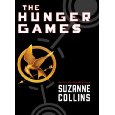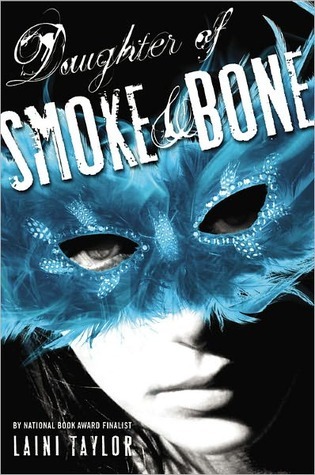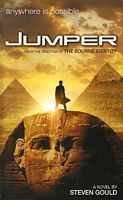As an author writing a YA novel I face the conundrum of determining how much graphic sex, violence and profanity my characters will experience in the course of the story. YA presents a challenge because you’re dealing with a broad spectrum of intellectual and emotional capacity to understand what is being presented. The distance between a 9 year old and a 14 year old and an 18 year old is huge in terms of an awareness of self, sexuality and the world. As a nine year old, I’m ready to see the princess fall in love with a king, but I’m not ready to see them fondle each other in the back room and definitely not see them make torrid love in the royal bedroom. And I might not be able to make a clear distinction between the violence in the story and how I play that out in the real world. However, if I’m 18, with a few exceptions, I am able to take in the full spectrum of possibilities — sex, violence and language — and not let that have a negative impact on my life.
But even at the older end of the YA spectrum, I find the waters a bit clouded in the marketplace. If you Google the “best of YA Fiction,” you’ll find a number of references. One of those suggested The Girl with the Dragon Tattoo as a “best of YA.” If you’ve read the book, you know there are explicit scenes of sexual abuse, sodomy and rape. An older, emotionally mature teen could read that story, but I would hesitate to pass that along to a 14 year old, not because the scene is gratuitous, which it is not. But because a 14 year old doesn’t have the life experience or emotional maturity to understand what that scene is about.
So I’ve gone to the bookshelf to pull out a few examples of older YA novels. Let’s see how they handle language, sex and violence.
 Hunger Games by Suzanne Collins
Hunger Games by Suzanne Collins
Violence: e.g., teens killing teens in various ways
Sex & Nudity: some snuggling
Expletives: 3
Summary (Amazon):
In the ruins of a place once known as North America lies the nation of Panem, a shining Capitol surrounded by twelve outlying districts. The Capitol is harsh and cruel and keeps the districts in line by forcing them all to send one boy and one girl between the ages of twelve and eighteen to participate in the annual Hunger Games, a fight to the death on live TV. Sixteen-year-old Katniss Everdeen, who lives alone with her mother and younger sister, regards it as a death sentence when she is forced to represent her district in the Games. But Katniss has been close to dead before-and survival, for her, is second nature. Without really meaning to, she becomes a contender. But if she is to win, she will have to start making choices that weigh survival against humanity and life against love.

Jumper by Steven Gould
Violence, e.g., attempted homosexual rape, mother ripped to pieces in an explosion
Sex & Nudity: implied sexual intercourse on several occasions
Expletives: 151
Summary (Library Journal)
The sudden discovery of his teleportation ability rescues teenager David Rice from his abusive father. It also signals the beginning of a new life for the troubled young man. Gould’s first novel features a hero who is not particularly wise and whose ethics are sometimes questionable, but whose yearnings and psychological turmoil ring true.
The Named by Marianne Curley
Violence: e.g., sister murdered by demon
Sex & Nudity: none
Expletives: 33
Summary (Amazon):
Ethan is a member of the Named, sworn to fight the Order of Chaos, an evil group determined to permanently change the course of history. But he is also a normal high school student trying desperately to keep up with his homework and fit in. When he is assigned to mentor Isabel, a cute classmate and future member of the Named, the line between his two lives begins to blur. So begins an epic quest as Ethan, Isabel, and others travel through time to battle dark forces and protect the future.
 Daughter of Smoke and Bone by Laini Taylor
Daughter of Smoke and Bone by Laini Taylor
Violence: piles of dead bodies with bloody mouths from teeth being removed, fights
Sex & Nudity: description of a male character modeling nude for an art class, implied sexual intercourse
Expletives: 45
Summary (Amazon):
Around the world, black handprints are appearing on doorways, scorched there by winged strangers who have crept through a slit in the sky. In a dark and dusty shop, a devil’s supply of human teeth grown dangerously low. And in the tangled lanes of Prague, a young art student is about to be caught up in a brutal otherwordly war.
Meet Karou. She fills her sketchbooks with monsters that may or may not be real; she’s prone to disappearing on mysterious “errands”; she speaks many languages–not all of them human; and her bright blue hair actually grows out of her head that color. Who is she? That is the question that haunts her, and she’s about to find out.
When one of the strangers–beautiful, haunted Akiva–fixes his fire-colored eyes on her in an alley in Marrakesh, the result is blood and starlight, secrets unveiled, and a star-crossed love whose roots drink deep of a violent past. But will Karou live to regret learning the truth about herself?
We’ve been struggling with these issues in the arts for many years. Think George Carlin’s Seven Dirty Words. In 2000 the Advertising Standards Authority, British Broadcasting Corporation, Broadcasting Standards Commission and the Independent Television Commission researched the use of expletives in a report entitled, Delete Expletives. While British and American standards may not always match up, I did find the ranking of words by perceived severity to be interesting. Research asked adults about their perception of the severity of various expletives. At the low end of the scale were double entendres, puns and rhymes. One level up were blasphemy (I can’t help but imagine that would score as more severe in the U.S) and abbreviations (e.g., f**k). The next level up in severity were descriptive words (think f**k, sh*t, but replace the asterisks with actual letters). And finally, the most severe expletives were abusive words (sexual, physical and racial). In the spectrum of expletives, the lowest level of words, essentially implied expletives within double entendres, puns and rhymes could pass in the 14+ level of YA. However, below age 14, I imagine that puns and rhymes on anything but hell, damn and crap would be at the limit. I personally have not read any authors using abbreviations, but some of the authors above do use a blasphemy or two. In older YA (16+?), descriptive words may come into play and occasionally an abusive word, if the word comes naturally from the story.
Another source that may give some insight in the appropriate use of expletives, violence and sex are the standards used by the Motion Picture Association of America, accepted nationwide in the United States.
Parental Guidance Suggested
This rating signifies that the program may be unsuitable for children under the age of 9 or 10 without the guidance of a parent. The TV-PG rating may be accompanied by one or more of the following sub-ratings:
• D for some suggestive dialogue
• L for infrequent coarse language
• S for some sexual situations
• V for moderate violence
Parents strongly cautioned/May be unsuitable for children under 14 years of age
Parents are strongly urged to exercise greater care in monitoring this program and are cautioned against letting children under 14 watch unattended. This rating may be accompanied by any of the following sub-ratings:
• D for intensely suggestive dialogue
• L for strong coarse language
• S for intense sexual situations
• V for intense violence
Mature audience — unsuitable for audiences under 17
An MA rating means the program may be unsuitable for those below 17. Programs may contain extreme graphic violence, strong profanity, overtly sexual dialogue, nudity, and/or strong sexual content. This rating may be accompanied by any of the following sub-ratings:
• D for dialogue is not used in this rating.
• L for crude indecent language
• S for explicit sexual activity
• V for graphic violence
Note the gradient as the rating moves from PG to R.
Dialogue: suggestive to intensely suggestive
Language: infrequent coarse, strong coarse, crude indecent
Sex: some sexual situations, intense sexual situations, explicit sexual activity
Violence: moderate, intense, graphic
I don’t have any empirical evidence, but I have a feeling that if I took a hundred people across a broad spectrum of this country, I would not get a consistent definition for any of these ratings. When does a dialogue shift to an intensity that would force a PG14 rating? Where is the line between an intense and an explicit sexual activity? What makes violence graphic, rather than intense? And I would add, is pretending that violence, which in the real world has very graphic consequences, is somehow not as significant doing our teens a favor or giving them a false sense of reality?
The BBC and the Motion Picture Association of America provide some clues, but I’m still mostly in a grey area, wondering what would be appropriate for older teens. Let’s look at this from another perspective. Why, as an author would I use explicit language, violence or sex in a novel?
Why use coarse language? I use expletives to make the character ring true to their culture and time. To give a character a unique voice and rhythm to the speech pattern. To communicate a heightened level of anxiety, angst or anger. I found Steven Gould’s use of expletives for his protagonist to be genuine to the character to the point that I didn’t find the swear words pulling me out of the story. And in the Hunger Games and the Daughter of Smoke and Bone, the lack of expletives also fit those characters within the fantasy worlds the authors had created.
Why use strong or graphic violence? I use strong or graphic violence to drive home the reality of the act, not as a romantic gesture, like a cowboy falling to the ground after being shot without any physical trauma or a war scene that feels sterile and false. The violence however, needs to be an integral part of the plot, not just a random violent act which does not move the story forward. And I’d reserve the more graphic violence for older teens 16+.
Why use intense or even graphic sexual situations? When the sex emerges naturally from the storyline and the characters. It needs to be integral to the plot, not just random sex. And while an author might want to fly the flag of freedom, the reality in American culture is that explicit sex is not appropriate for anyone under the age of eighteen. For older YA that means sex can be suggestive, just not explicit.
The final pass to make is in terms of marketability. Authors want to write their story, but we also want to have a market so the story is read. Jumper, published in 1992 and re-released in 2008 has many expletives, moderate to graphic violence and moderate sexual situations. The book won awards for YA fiction from the American Library Association and International Teacher’s Association. Books like the Hunger Games, a best seller and now a movie, and Daughter of Smoke and Bone both have some commonalities with each other: minimal expletives, moderate violence and mild to moderate sexual situations.
So what is the bottom line? I think for every older YA book (16+) without explicit language, moderate sexual activity and moderate to graph violence there’s a counterpoint. The guiding principle for language, sex and violence in a novel is whether or not it comes naturally out of the story and the characters and is necessary to move the plot forward. In other words, is an expletive, a sex act or an act of violence genuine to the character or gratuitous?
In my current thinking, I use moderate expletives, intense sexual situations and moderate to graphic violence in a novel directed to the older YA market with a crossover to the Adult market. In the end, how we use language and these tools is an ongoing conversation. The culture, the market, and the art of writing constantly shift and change. As authors, keeping up with the craft of writing means staying in the conversation. So what do you think? Where should the lines be drawn for language, sex and violence in YA novels?



I suppose I’m one of the target audience for that. My take is that you should be true. If you try to soften what should happen on the page, I’ll throw your book across the room as preachy.
So, yeah, Harry Potter in the first book shouldn’t snog Hermione, and should be more interested in getting a decent broom because brooms are cool. But a Harry Potter that never thought a naughty thought or said a bad word in the last book?
Come on. That is not being truthful to the characters, or the story. Having Mrs Weasley call Beatrix a ‘bitch’ is totally appropriate i the situation.
Well put. “you should be true”. Readers know when a character or dialog doesn’t ring true.
[…] I found a good blog post by Richard Hacker where he asks where the line goes for Young Adult fiction, and I think back to “Junk”. It was […]
Check out Colin’s blog on the topic at http://colinon.wordpress.com/2012/04/09/dont-let-me-throw-your-ya-book-across-the-room/